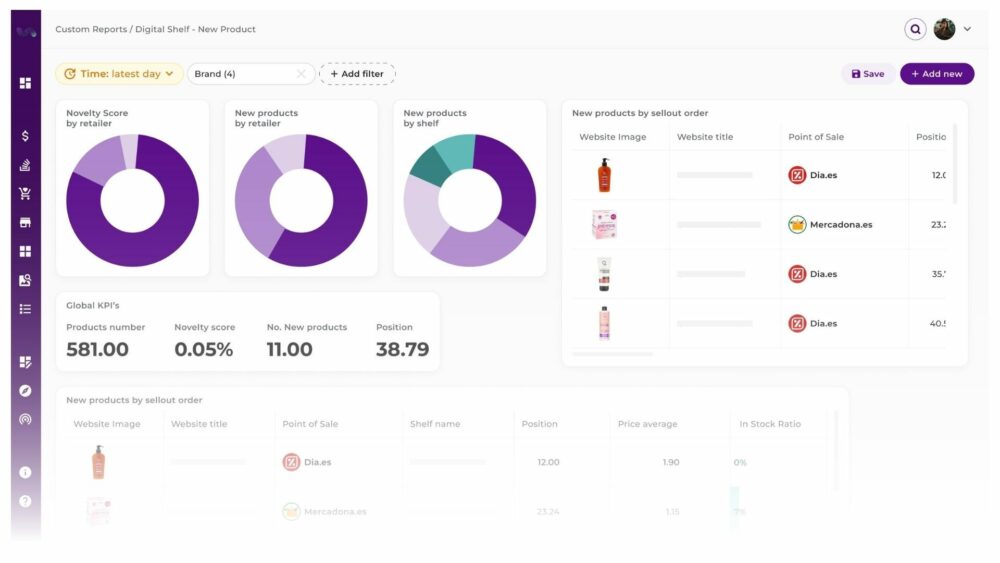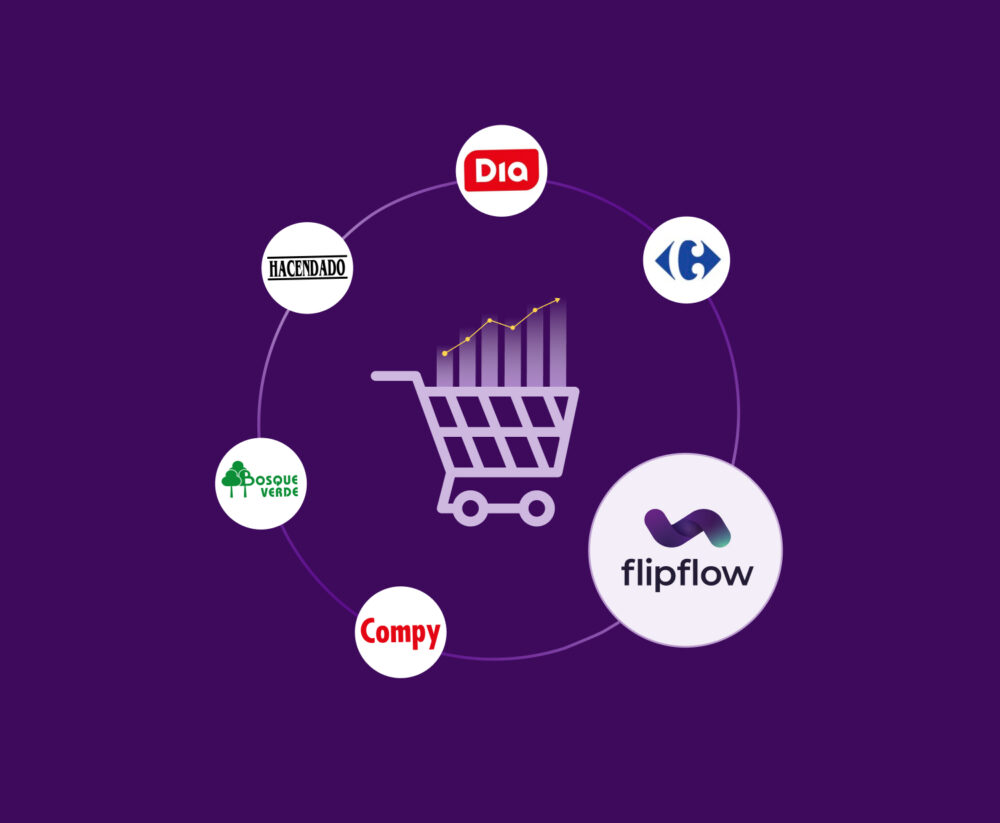7 Strategies for Efficient Multichannel Product Management
The way consumers interact with brands and purchase products has undergone a significant transformation in recent decades. From traditional retail models centred on physical stores, there has been an evolution towards a complex and diverse landscape encompassing a multitude of online and offline options.
A Harvard Business Review survey of over 46,000 shoppers in the US revealed that a large majority (73%) prefer to use multiple channels during their purchasing process. 20% opted to buy solely in-store and the remaining 7% shopped exclusively online.
Furthermore, it has also been shown that omnichannel shoppers have a 30% higher lifetime value than those who use a single channel.
In this context, multichannel product management has become an essential discipline for businesses seeking not just to survive but to thrive. Efficient management in this environment allows organisations to offer a consistent and satisfying customer experience, regardless of the channel chosen for interaction.
Defining Multichannel Product Management: Consistency and Omnichannel Experience as Pillars
Multichannel product management is based on offering a consistent and seamless shopping experience across all touchpoints of your business. This approach seeks to ensure that the customer perceives the brand in the same way, whether in a physical store, on a website, on mobile apps or on social media.
Consistency between information and user experience is fundamental to building trust. By working with an omnichannel strategy, businesses can optimize resources and adapt to customer needs. This not only increases loyalty, but also improves search engine rankings and, consequently, sales.
This report will explore 7 fundamental strategies for achieving efficient multichannel product management, addressing crucial aspects from Digital Shelf optimization to personalized customer experience and continuous monitoring.
1. Digital Shelf Optimization: Maximize your Visibility and Conversion
This strategy is essential for capturing customer attention and improving brand positioning on one of today’s most important channels: the internet.
What is the Digital Shelf and why is it vital?
The Digital Shelf encompasses all aspects of a product’s online presence: descriptions, images, reviews and prices. Optimized content on the digital shelf helps search engines index and correctly display your products. This increases the likelihood of a potential customer finding the information they need.
Key aspects of Digital Shelf optimization
- High-quality content: Use clear and detailed descriptions. Include relevant keywords without overusing them.
- Professional images: High-quality images convey trust. Ensure they are attractive and representative.
- Reviews and ratings: Publish customer reviews. These can significantly influence purchasing decisions.
- Accurate information: Verify that data, such as price and availability, is accurate and up-to-date.
Benefits of good optimization
- Improved search engine ranking: By having relevant content, search engines will reward your page.
- Increased conversion rate: Users will find the information they need and feel more confident when buying.
- Brand strengthening: An impeccable product presentation generates trust and loyalty.
Proper Digital Shelf optimization is undoubtedly the first step in improving your business’s online presence and capturing the attention of potential customers.
2. Real-time Inventory Synchronization: Key to Avoiding Stockouts and Disappointment
Inventory control is a complex task in multichannel management. Real-time synchronization ensures that data is accurate across all sales channels. This is vital for avoiding overselling or, conversely, lost sales due to stockouts.
Advantages of inventory synchronization:
- Prevention of out-of-stocks: Situations where a product appears available and then sells out are avoided.
- Improved customer experience: An informed customer is a satisfied customer. Transparency on stock levels builds trust.
- Resource optimization: You can better manage your orders and plan replenishments without problems.
Having systems that automatically update inventory ensures that every channel is aware of real availability. This method avoids confusion and significantly improves the shopping experience.
3. Data Centralisation with PIM Systems: Unify your Information and Make the Right Decisions
To achieve comprehensive product management, it is fundamental to have centralized and organized information. A PIM system (Product Information Management) allows you to unify data from different sources and update it easily.
What is a PIM system and what are its advantages?
A PIM is a tool that collects and manages all the relevant information about your products. From technical details to descriptions and photos, everything is consolidated in a single location. Using a PIM system has several advantages in efficient multichannel product management:
- Consistent information: All channels display uniform data. This reduces the risk of errors and confusion.
- Efficient management: Centralization saves time and resources by updating information en masse.
- Data-driven decisions: Accessing precise information facilitates analysis and strategic decision-making.
Implementing a PIM system is undoubtedly an investment that optimizes product management. Data centralization translates into greater agility and precision in your daily operations.
4. Channel-specific Personalization: Connect Uniquely with Each Audience
Each sales channel is a different world with its own particularities. Personalizing the experience in each one is fundamental to attracting and retaining customers.
Personalization allows you to adapt the message, design and products to the preferences of each audience segment. A personalized strategy increases content relevance and boosts the conversion rate.
According to a report by Segment, more and more consumers (69% specifically) expect a personalized and consistent customer experience across different channels, both physical and digital. However, few businesses are meeting this expectation. Less than 1 in 4 businesses (24%) say they are successfully investing in omnichannel personalization.
Strategies for achieving effective personalization:
- Audience segmentation: Divide your customers according to their behaviours and preferences. This will help you design targeted strategies.
- Adapted content: Use specific messages for each channel. What works on social media may be different from what works on the web.
- Offers and promotions: Personalize discounts and promotions based on purchase history and customer interaction with the brand.
- Use of real-time data: Use analytical tools to understand and anticipate consumer needs.
Channel-specific personalization is essential for connecting authentically and closely with each customer. Using it will strengthen your brand image, improve the user experience and encourage repeat business.
5. Delivering an Exceptional Omnichannel Customer Experience
The main objective of multichannel management is to offer a consistent experience across all touchpoints. An exceptional omnichannel experience encompasses everything from the first contact to after-sales service.
Furthermore, a staggering 88% of customers say that customer experience is as important as the product they are going to purchase, according to wisernotify.

Factors influencing a successful omnichannel experience:
- Channel integration: All information is synchronized to provide a uniform experience.
- Personalized service: Customers should feel looked after in every interaction, regardless of the channel.
- Consistent brand image: Visual identity and messaging should remain constant across all media.
- Ease of use: Interfaces should be intuitive and adaptable to different devices.
A well-managed customer experience generates loyalty and reduces cart abandonment. Exceptional customer service translates into positive recommendations and an increase in online reputation.
6. Predictive Analytics with AI: Anticipate Trends and Optimize Strategies
Predictive analytics has become an indispensable tool for businesses that want to anticipate market needs. Thanks to artificial intelligence, large volumes of data can be analyzed and future behaviours predicted.
How predictive analytics with AI works
AI analyzes historical data and behavioral patterns to generate predictive models. These models help to:
- Identify trends: Detect market changes before they become evident.
- Optimize sales strategies: Adjust campaigns and product offerings based on demand.
- Improve inventory management: Predict sales peaks and avoid stockouts.
- Personalize the experience: Recommend products based on customers’ previous behavior.
Furthermore, using Artificial Intelligence has additional benefits, such as resource savings and reduced operating costs, real-time strategy adaptability and the elimination of guesswork, making informed decisions.
Using AI in predictive analysis allows you to be proactive rather than reactive, anticipating market demands and achieving a significant competitive advantage.
7. Analytics as a Compass: Continuous Monitoring and Agile Adjustments
Analytics plays a fundamental role in efficient multichannel product management. Tracking performance across different sales channels, whether it’s your own website, online marketplaces, social media platforms or even physical stores, provides valuable information on what is working and what is not. This information allows for the identification of areas for improvement and new opportunities to optimize the multichannel strategy as a whole.
Keys to effective analytics
- Tracking tools: Implement tools that collect real-time data, such as flipflow.
- Defined KPIs: There are a number of metrics that businesses should measure to evaluate the performance of their multichannel strategy. It’s important to note that not all metrics are equally relevant to all businesses. The determining factor is identifying those KPIs that best reflect the business’s strategic objectives in its multichannel environment.
- Iteration and improvement: Analyze the results and make continuous adjustments to your campaigns and processes.
Proper implementation of analytics transforms data into a strategic compass. This allows you to identify areas for improvement and respond quickly to changing market conditions.
Conclusion – Towards Sustainable Multichannel Management
Efficiently managing products across multiple channels is a necessity in today’s digital environment. Implementing these seven strategies will allow you to offer a seamless and consistent customer experience, while also boosting your brand’s performance.
Each of the actions discussed—from Digital Shelf optimization to the use of AI-based predictive analysis—represents an essential component of a comprehensive system that, when working together, drives business growth. The key is to maintain consistency across all channels, adapt content according to customer profiles and leverage data intelligently.
Think of these strategies as cogs in a machine that, when properly aligned, build a strong, versatile and prepared brand to face market challenges.
Achieving sustainable multichannel management also involves integrating tools, automating processes and applying technologies that allow for anticipation of change and agile action. Staying up-to-date and being able to adapt is fundamental to remaining relevant. In such a dynamic environment, brands that constantly evolve are the ones that stand out.
Finally, it’s important to understand that success isn’t achieved immediately. The crucial point is consistency, continuous evaluation and the ability to improve based on experience. Sustainability in multichannel management requires commitment, a long-term vision and a willingness to evolve alongside consumer needs.
Remember: each channel is an open door to your customer. Use them consistently, measure intelligently and evolve relentlessly. That’s the secret to multichannel success.







